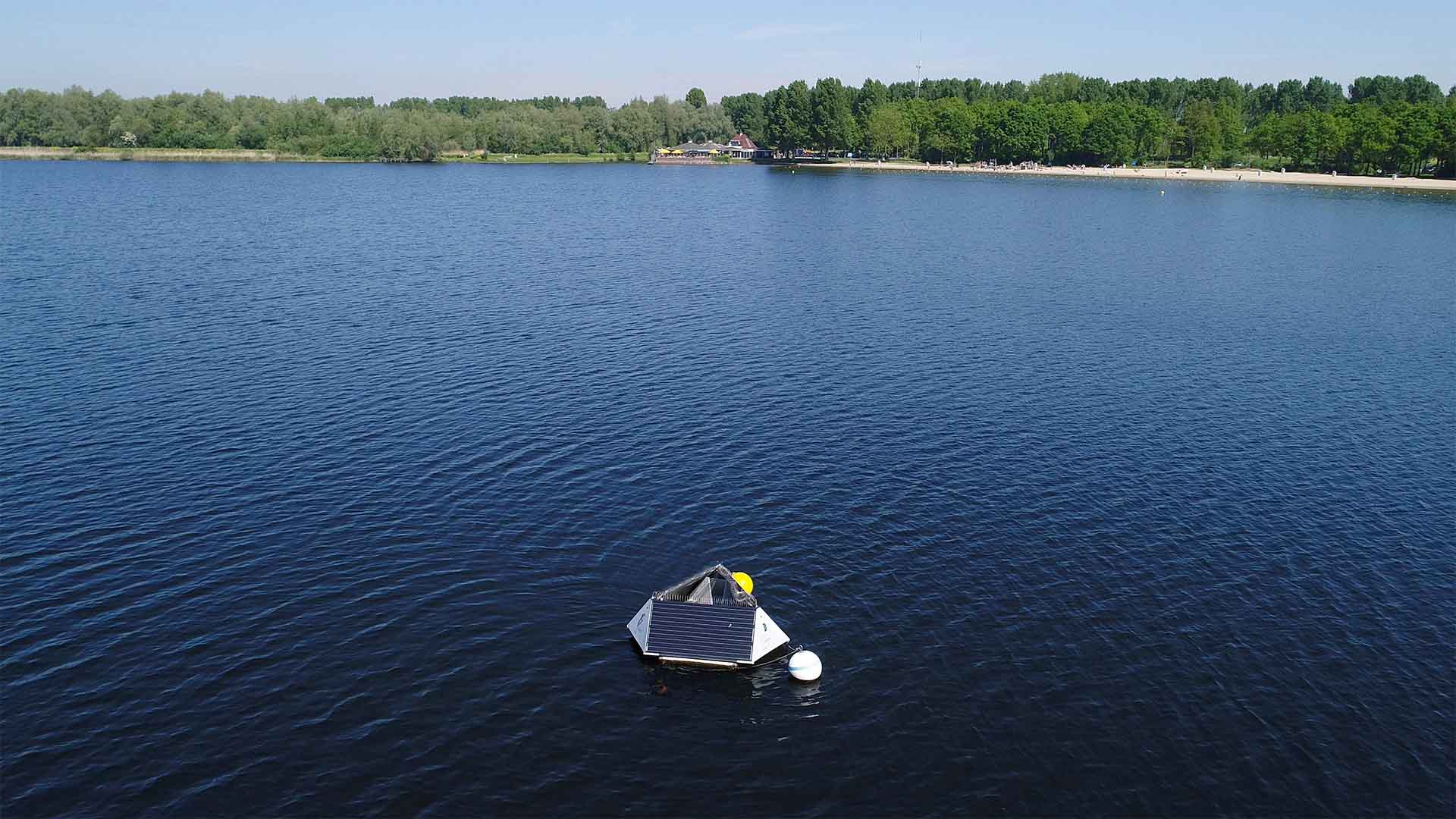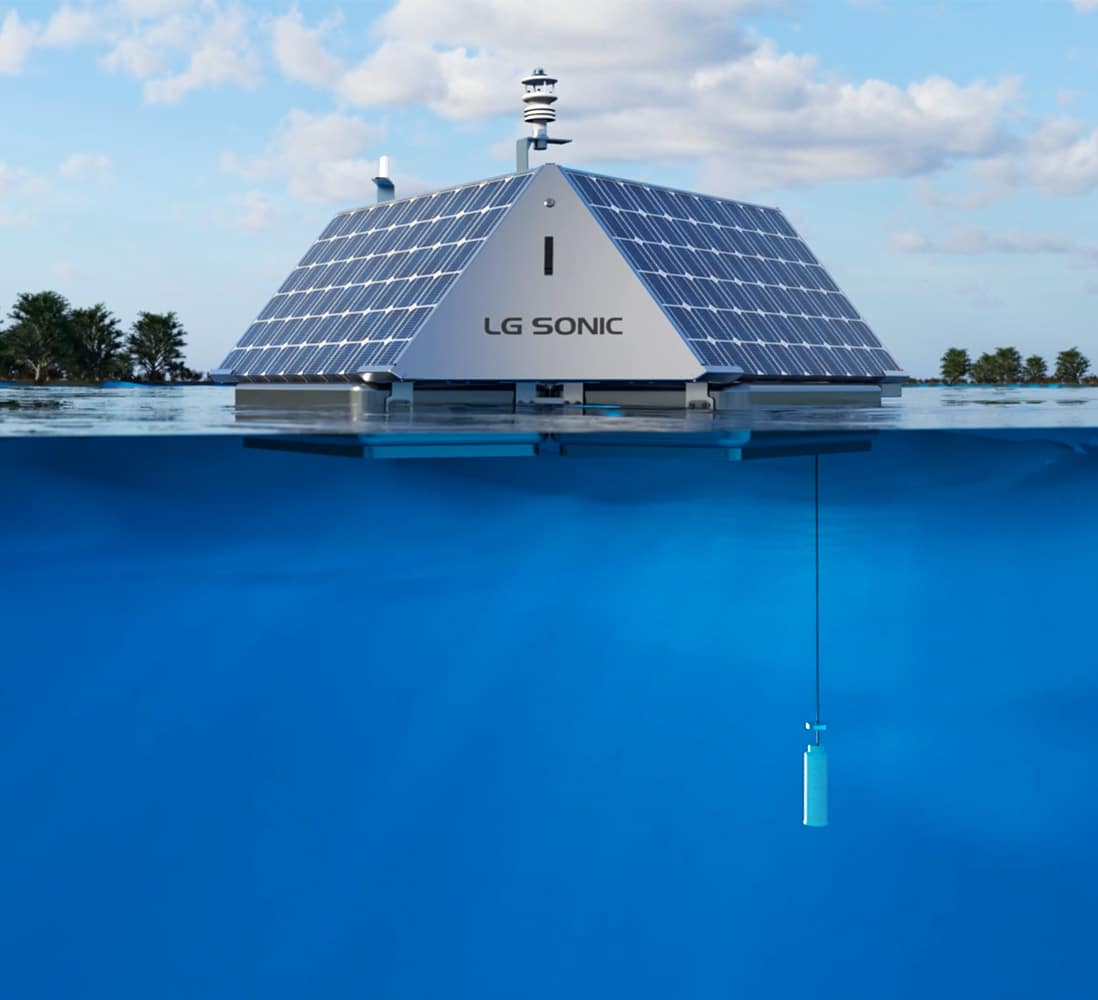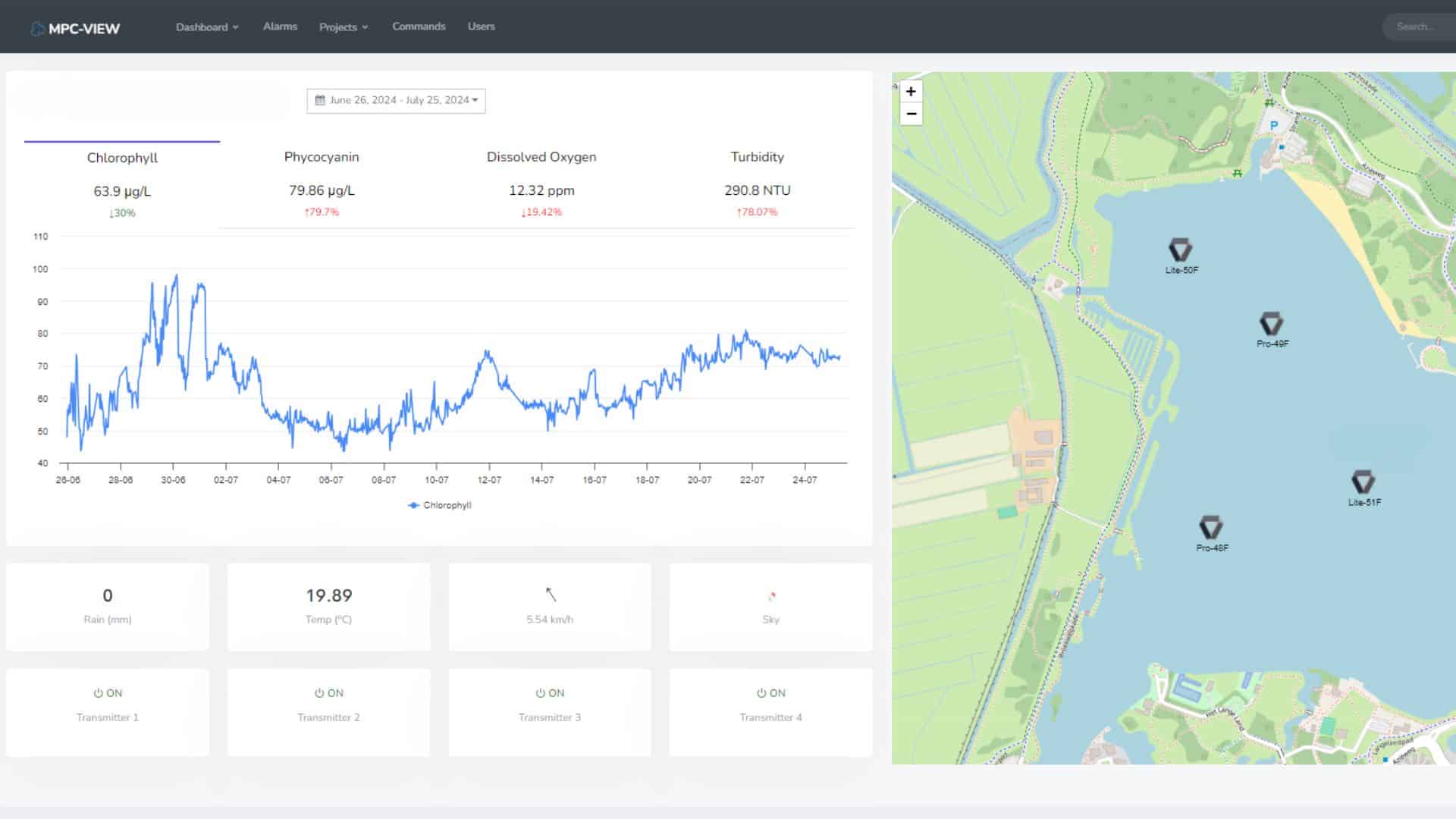Cyanobacteria, often referred to as blue-green algae, are a type of microalgae that thrive in both marine and freshwater environments. Like other phytoplankton, they are an essential component of the aquatic food chain, providing a primary source of energy for various marine organisms. However, cyanobacteria can also produce harmful toxins and compounds that cause taste and odor problems, making them a threat to surface water quality.
Climate change and human activities can increase nutrient levels in water bodies, creating favorable conditions for cyanobacteria to grow excessively, leading to what are known as Harmful Algal Blooms (HABs). These blooms can release toxins into the water, which may accumulate in shellfish and other marine life, posing significant health risks to humans and disrupting aquatic ecosystems.

Recent research has highlighted the importance of understanding and monitoring cyanobacterial populations due to their sporadic fluctuations. These fluctuations can vary diurnally, across different depths, and between interconnected water bodies, making accurate monitoring challenging. LG Sonic’s technology bridges this gap by providing high-resolution, real-time monitoring of cyanobacterial populations at various depths and times, ensuring accurate assessments and improving water quality management.

Research Findings Elaborated
Recent research by Ellen S. Cameron, Anjali Krishna, Monica B. Emelko, and Kirsten M. Müller highlights the challenges in monitoring cyanobacterial populations in oligotrophic temperate lakes. Their study, published in Water Research, reveals that cyanobacterial populations fluctuate sporadically across diurnal cycles, vary significantly between interconnected lakes, and undergo significant annual shifts.
Here is an overview of the key research findings and LG Sonic’s responses:
-
Threat to Water Resources: Cyanobacteria threaten water resources worldwide.
-
LG Sonic’s Solution: Our MPC-Buoy system monitors and controls harmful algal blooms in real-time, ensuring safe and clean water.

-
Need for Dynamic Monitoring: Cyanobacteria populations change throughout the day due to vertical migration.
-
LG Sonic’s Solution: The Vertical Profiler provides high-resolution, multi-depth data, capturing these dynamic changes accurately.
-
Inadequate Traditional Monitoring: Typical monitoring often only samples surface water at limited times, missing key cyanobacterial dynamics.

-
LG Sonic’s Solution: Our systems monitor water quality continuously at various depths and times, providing a comprehensive understanding of cyanobacterial behavior.
-
Importance of Comprehensive Sampling: Effective risk management requires multi-timepoint, multi-depth sampling to track cyanobacteria accurately.
-
LG Sonic’s Solution: The combination of MPC-Buoy and Vertical Profiler ensures thorough sampling and monitoring, helping to mitigate risks associated with cyanotoxins.
These findings emphasize the importance of incorporating both time and depth into cyanobacteria monitoring protocols to better assess and manage risks associated with cyanotoxin production and water quality degradation. Ignoring variability in cyanobacterial community dynamics and reducing sample numbers can lead to a false sense of security and missed opportunities to identify and mitigate changes in trophic status and associated risks such as toxin or taste and odor production, especially in sensitive, oligotrophic systems.
The Perfect Response to Cyanobacterial Monitoring Challenges
LG Sonic’s MPC-Buoy combines real-time water quality monitoring with ultrasonic treatment to manage algae and cyanobacteria populations. The system can be deployed in various water bodies, including lakes, reservoirs, and ponds, and is effective in environments with different nutrient levels.
The Buoy is enriched by the Vertical Profiler, which is the most accurate and cost-efficient way to measure the entire water column.This add-on employs a winch to lower the sensors to the desired depths, enabling detailed vertical profiling across different depths and times.

Furthermore, the system can be improved by adding more sensors, such as those for PO4 (phosphate) analysis. Phosphate is a key nutrient that affects cyanobacterial growth. This enhancement provides a more complete solution for monitoring and managing cyanobacteria in water bodies.
The data collected by these sensors is transmitted in real-time via 4G, radio, or satellite to the MPC-View online software, which provides users with continuous insights and alerts based on pre-determined parameters. These technologies bridge the gap identified in recent research by enabling continuous, high-resolution data collection and treatment, which are crucial for managing the sporadic fluctuations of cyanobacteria in oligotrophic lakes.

LG Sonic applies adaptive ultrasonic treatment that uses targeted sound waves, with frequencies that are continuously re-adjusted, to control algae and cyanobacteria growth. By combining real-time monitoring, adaptive ultrasonic treatment, data-driven decision-making, and advanced sensing technologies, LG Sonic effectively addresses issues caused by cyanobacteria and their fluctuations. This ensures reliable water quality monitoring and sustainable water treatment.
